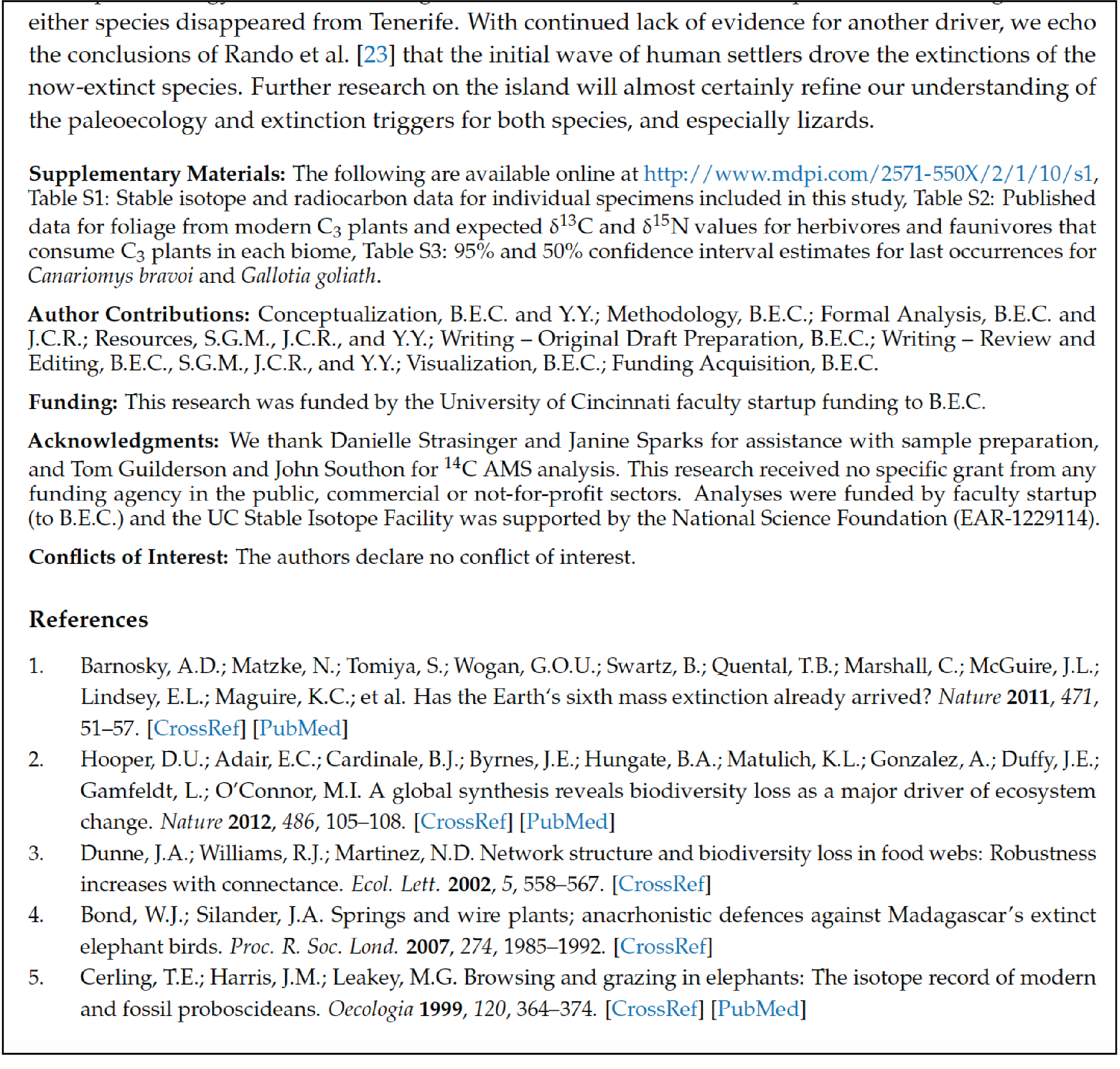7 Back Matter and References
Back matter refers to everything that comes after the main text of the document. (See Fig. 2.11 for an example.)
7.1 Addendum, Acknowledgments, etc.
At the end of the document but before the end reference list there may be several items included. For example you could include a list of supplementary materials, either unpublished or available online. Acknowledgments usually identify funding and the contributions of those who are not listed as authors. It has also become common to include an author statement that credits the role of each author such as who participated in research, writing, revising, etc.
7.2 References
Citing or documenting your sources are crucial both to avoid plagiarism and for credibility. The Crowley et al. (2019) document that has been used as a sample for you to look over only has 18 pages of text but 120 references!
You probably learned Modern Language Association (MLA) citation style either in high school or your first English class at college. This style, however, is not used in the sciences. You also may have learned APA style citations. This refers to the to the American Psychological Association’s style guide. APA is used in the social sciences and in some other disciplines. In the physical and natural sciences many of the journals will use what is called Scientific Style and Format from the book of the same name prepared by the Council of Science Editors (CSE). If you learned APA (or what is commonly called the author-date) citation system then you are in luck as this style is similar to the CSE name-year citation system. Many science journals, however, use the alternate CSE style known as citation-sequence. You should become familiar with both the name-year and citation-sequence systems but place special emphasis on learning whichever system your major uses.
For example, biology typically uses CSE name-year system, physics uses the CSE citation-sequence system, but chemistry uses the American Chemical Society (ACS) system (which is very similar to CSE citation-sequence system.) Thus it is important to learn what is the commonly accepted way of citing references in your major.
Once you have discovered the citation system your major uses, the next step is to learn how to do both in-text references and end references. In-text references occur in the text where the information is written and usually only contain just enough information to redirect the reader to the end references. The end references contain all the information a reader needs to find the source of the information. See the chapter on “Citation & Copyright” for more information. Please consult Scientific Style and Format or the style guide for your career field for a more detailed overview of references.
Writing tip: When writing in the sciences using quotations is generally discouraged. Instead it is expected that one will summarize or synthesize the findings or main points and then cite the source.
7.3 Appendixes
After the references if necessary one can include appendixes (sometimes spelled appendices). They should be numbered with an Arabic numeral and have a title. Appendixes could include supplementary materials such as calculations, figures, or tables that are too long to fit in the Results or other sections without interrupting the flow of the text, glossary of terms, or sample documents.


